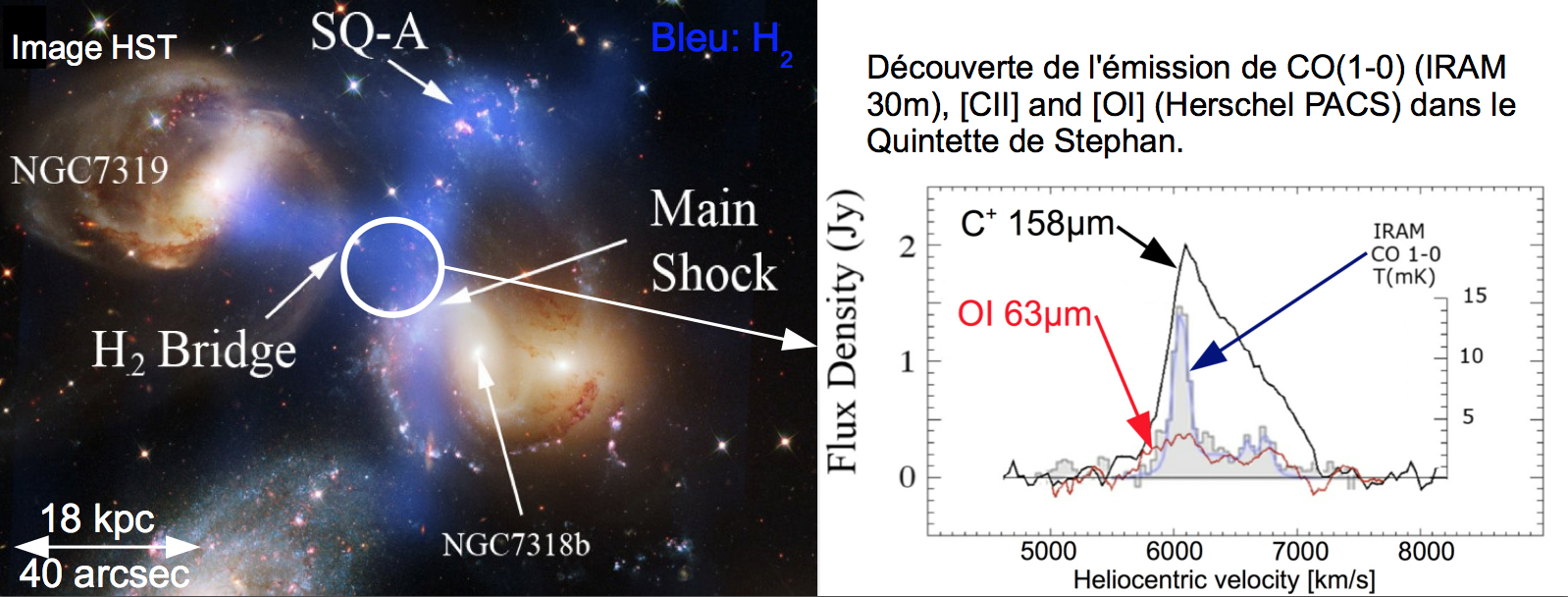Why is galaxy formation inefficient?
Galaxies form by gravitational collapse of gas in virtualized dark matter haloes. The kinetic energy released by structure formation, mergers, gas accretion and feedback must be dissipated for star formation to proceed. How does this energy input impact the star formation efficiency? My work adresses this question, central to our understanding of galaxy formation.
Galaxy evolution: models vs. observations
Two main tensions appear when galaxy evolution models are compared with observations: (1) the over-cooling problem: most of the baryons should have condensed into dense clouds or stars; however this fraction is only 10%, and (2) the hierarchy problem: massive galaxies in the local Universe show an old stellar population, formed at high redshift, with weak subsequent star formation activity. This is in contrast with hierarchical models where gas accretion should continue to fuel star formation at later times. These difficulties, amongst others, result from our simplistic description of the non-linear baryon physics, and the difficulty to describe processes that span many orders of magnitude in time and spatial scales.
Current work: the role of turbulence in galaxy formation
Within this context, I am exploring the role of turbulence, driven by structure formation, accretion and feedback, in galaxy evolution, from theoretical and observational point of views.
I develop physical and chemical models to describe the state of the molecular gas and relate it to the star formation efficiency, in different astrophysical environments and stages of galaxy evolution (galaxy groups and clusters, mergers, radio galaxies and active galactic nuclei). I am also interested in the link between the galaxies’ environment and their star formation efficiency.
Recently, we have started a PhD project with Nicolas Cornuault to study the impact of turbulence on the efficiency of gas accretion onto halos of galaxies. I also conceive and analyse observational data to characterize the morpho-kinematics of the gas in turbulent environments and characterize the turbulent cascade down the scales of star formation. These studies involve the use of competitive facilities like Spritzer, IRAM PdBI/NOEMA, ALMA, Herschel, HST and scientific preparation of the James Webb Space Telescope.
Where it all started…Stephan's Quintet observations and model
My PhD thesis work started with the discovery of surprisingly bright molecular hydrogen emission from the Stephan Quintet shock (Appleton et al. 2006, Cluver et al. 2010; see the blue emission in the left panel of the figure below). I focused my PhD work on the theoretical interpretation of these observations, and proposed a model to account for the formation and excitation of molecular hydrogen in such an extreme environment of a high-speed galaxy collision (Guillard et al. 2009). This involves analytical and numerical models of mass and energy transfers between ISM gas phases. My work also involves modeling of the dust evolution and emission in the Stephan Quintet shock (Guillard et al. 2010). I discovered large amounts of turbulent CO gas with extremely weak star formation (Guillard et al. 2012a). Herschel observations also show bright [CII]158μm emission (Appleton et al. 2013, see right panel of the image below).

AGN Feedback, Star Formation and Molecular Gas
I have extended my research activity on the impact of AGN feedback on the molecular gas. I focused my work on a sample of radio-galaxies which exhibit fast (up to 1000 km/s) outflows of HI gas and high turbulence. Those galaxies exhibit bright molecular hydrogen emission (Ogle et a. 2010, Guillard et al. 2012b) and [CII] emission, and have suppressed star formation, owing to the high turbulent support in their disks (Guillard et al. 2014a, Guillard et al. 2015). My close collaborators are Matthew Lehnert, François Boulanger, Phil Appleton, Edith Falgarone, Pierre Lesaffre, Bjorn Emonts, and Patrick Ogle. My work involves the data reduction of Herschel, Spitzer, radio and near-IR spectroscopy, as well as modeling of the molecular gas excitation and comparison of multiphase gas kinematics.
